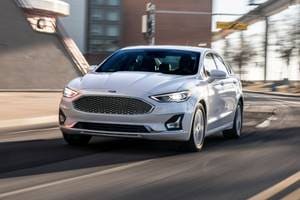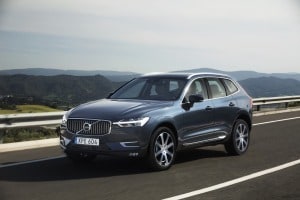Olympic Advertising Lifts BMW and Cadillac
BMW took home the most gold medals for the effectiveness of its advertising during the London 2012 Olympics; General Motors' Cadillac Division took silver. And both luxury brands saw an increase in actual sales during the first couple weeks of August, according to Edmunds.com's analysis.
Both the BMW and Cadillac brands saw an increase in shopping consideration on Edmunds.com, from the opening to closing ceremonies of the London games. Shopping consideration, measured by visitors who click on the brand and its models, is an indicator of advertising effectiveness, but not necessarily a predictor of future sales. However, Edmunds.com's data, based on actual sales transactions at dealerships during the first couple of weeks of August, showed sales actually did increase, with retail market share for BMW and Cadillac climbing from the comparable period of July.
From the opening ceremony to the closing one, the Cadillac brand posted the biggest rise in shopping consideration on Edmunds.com at 59 percent. For the first 11 sales days in August compared with the first 11 sales days of July, Cadillac's retail market share rose 19 percent, the largest percentage increase of any of GM's four brands, all of which experienced gains. Indeed, some of the increase is due to the fact that Cadillac has a new model already on the market. The flagship Cadillac XTS went on sale in June. Sales totaled 1,729 XTS models in July after 763 were sold in June, the first month it was in dealerships. But it wasn't the XTS that starred in Cadillac's Olympics commercials. Rather, GM advertised the 2013 Cadillac ATS, its BMW 3 Series fighter that goes on sale later this year. The "Cadillac ATS vs. The World" campaign, designed to establish the brand-new Cadillac nameplate, launched during the opening ceremony of the London Olympic Games and continued throughout the games.
The ATS ads, which put Cadillac on the fast track as shopping consideration soared over the first weekend of the games, were actually a series of mini-films featuring the new entry-luxury sport sedan in various places in the world to show off the car's agility and driving capabilities. Locations include the deserts of Morocco, the streets of Monaco, the hand-chiseled Guoliang Tunnels of China and windswept Patagonia, Chile.
"Cadillac couldn't be more thrilled with our results from using the Olympics media platform to launch the new ATS," said Molly Peck, Cadillac director of advertising. "There are many data points proving that the campaign was a resounding success. Not only did Edmunds see an increase in shopping consideration for the ATS but Cadillac's digital sites also had a 62-percent lift in visits during the games."
BMW, a first-time official sponsor of the Olympics, ranked second for effectiveness for its advertising during the London Games. Shopping consideration for BMW-branded models increased 32 percent; Mini rose 13 percent, according to Edmunds.com's analysis.
Trudy Hardy, BMW of North America's marketing communications manager, told trade journal Advertising Age that the German automaker saw a great deal of initial return on its advertising investment in the way of exposure, including Web traffic. Some encouraging statistics provided to Edmunds.com by BMW include: 26-percent increase in site visits to bmwusa.com during the Olympics versus before the Olympics; of those visitors, 54 percent were first timers; a 20 percent increase in sales leads from its site; and a 22-percent increase in Build Your Own leads, which leads to a higher conversion to sales rate, BMW said. On the social media front, BMW said it had a 7 percent increase in Twitter discussion. It gained more than 5,000 Twitter followers and 14,000 Facebook fans, and it garnered more than 80,000 views on its YouTube channel.

GM's Chevrolet division, which also advertised during the games, missed the winners' podium altogether, posting no increase in shopping consideration. It appears a major difference between the effectiveness of BMW and Cadillac advertising versus Chevrolet's was the content of the ads. The luxury brands focused on individual models. BMW ads highlighted a number of models in its portfolio. Cadillac commercials focused on ATS. Chevrolet ads, instead, showed models like the Chevrolet Cruze but emphasized aspects of the Chevrolet Confidence program launched in mid-July, including no-haggle value prices and a vehicle return policy.
The BMW X1, a new entry-level crossover, took the gold in individual performance, posting the largest rise in shopping consideration on Edmunds.com – a massive 1,011 percent increase. The Cadillac ATS came in second with a 455-percent gain. Both are brand new models so a virtually non-existent base.
BMW also advertised its popular X3 crossover, which had a 26-percent rise in shopping consideration, and the 5 Series sedan, up 11 percent. Mini saw a 19-percent gain in shopping consideration of the Mini Cooper. The Mini Cooper played a big role in the Olympics. A fleet of Mini electric vehicles were used to help athletes with their gear, and others made were featured in the closing ceremony that focused on British culture.
Interloper Acura, which had no official tie to the Olympics but bought a hefty amount of air time during the games, enjoyed an 11-percent increase in shopping consideration for its brand-new ILX, its Honda Civic-based entry-luxury sedan.
















